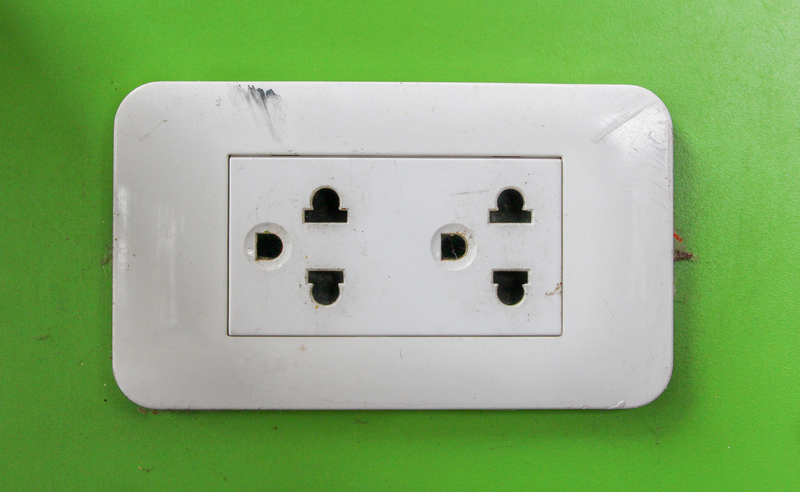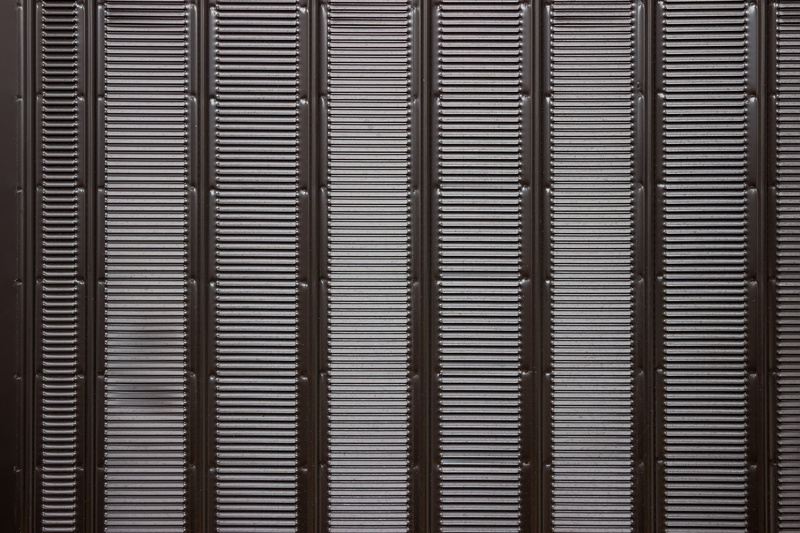Achieve Sparkling Silhouette: Mould-Free Window Sills
Posted on 15/06/2025

Achieve Sparkling Silhouette: Mould-Free Window Sills
If you've ever spotted ugly dark patches lining your window sills, you know how quickly mould can affect not just the look, but also the health of your home. Achieving a sparkling silhouette, that perfectly clean border between indoor and outdoor light, is about more than just aesthetics. Mould-free window sills promote better air quality, prevent costly repairs, and keep your home's value high. Here is your comprehensive guide to maintaining pristine, mould-resistant window sills in any property.

Contents
- Why Does Mould Grow on Window Sills?
- Dangers of Mould: Indoor Air Quality and Health
- Best Practices for Keeping Window Sills Mould-Free
- Effective Window Sill Cleaning & Maintenance Strategies
- Choosing the Best Materials for Mould-Resistant Window Sills
- Long-term Solutions: Ventilation & Moisture Control
- FAQs about Mould on Window Sills
- Final Thoughts: Sparkling Silhouette and Healthy Living
Why Does Mould Grow on Window Sills?
Understanding why window sills are a hotspot for mould is the first step toward prevention. Mould is a type of fungus that thrives in moist, poorly ventilated areas. Window sills often trap condensation, especially during temperature changes, making them an ideal breeding ground for fungal growth.
Common Causes of Mould on Window Sills:
- Condensation: Fluctuations in temperature can cause water vapor to collect on cool surfaces like glass and the adjacent sill.
- Poor Ventilation: Lack of airflow prevents the drying of accumulated moisture.
- Organic Debris: Dust, pollen, or dirt on the sill provide nutrients for mould spores.
- Leaky Windows: Gaps or cracks let rain and humidity seep in, encouraging mould colonies.
- Humid Climate: Areas with naturally high humidity see faster mould growth.
By appreciating these risk factors, you can develop tailored habits and strategies to achieve mould-free window sills all year round.
Dangers of Mould: Why You Need to Act
While some might dismiss mould as a mere cosmetic nuisance, its impacts run far deeper. Subtle black or green stains could point to hidden health hazards and structural damage.
The Health Risks of Living with Mould
- Respiratory Issues: Mould releases tiny spores that, when inhaled, can trigger coughing, wheezing, and lung irritation.
- Allergic Reactions: Symptoms like sneezing, skin rashes, and red eyes can worsen in mould-prone homes.
- Asthma Attacks: For those with asthma, exposure to mould may prompt attacks and severe breathing problems.
- Increased Risk for Immunocompromised Individuals: The very young, elderly, and those with chronic illnesses are especially vulnerable.
Prolonged exposure can also damage walls and carpentry, leading to repairs that cost more than preventive care would. Keeping your window ledges mould-free is essential for a healthy, comfortable living environment.
Best Practices for Keeping Window Sills Mould-Free
Achieving a sparkling silhouette--that crisp, clean line where glass meets painted wood or metal--depends on diligence. Adapt a few simple lifestyle changes and cleaning routines to keep mould outside where it belongs.
Daily and Weekly Habits to Prevent Mould
- Wipe Sills Dry: After rain or each morning in winter, gently dry your sills and frames with a clean cloth.
- Open Windows: Ventilate daily to help excess moisture escape and keep air moving--good for both your sills and your health!
- Monitor Indoor Humidity: Keep humidity below 50% using dehumidifiers or air conditioning in muggy climates.
- Dust and Hoover Regularly: Remove debris before it becomes an organic buffet for spores.
Monthly and Seasonal Checks
- Inspect for Cracks: Look for gaps around windows that may allow water ingress, especially after storms or freezes.
- Clean Window Glass: Clean glass prevents the buildup of grime and stops condensation from dripping onto the sills.
- Trim Outdoor Foliage: Fewer plants near the window mean less pollen and organic matter accumulating on your sills.
Effective Window Sill Cleaning & Maintenance Strategies
Even if you follow all the right habits, occasional deep-cleaning is key. Here's how to clean window sills and address existing mould safely and thoroughly, so you can achieve a sparkling, mould-free window appearance.
Removing Existing Mould from Window Sills
- Preparation: Wear gloves and a mask to avoid inhaling spores. Open windows for ventilation.
- Vacuum: Use a vacuum cleaner with a HEPA filter to remove loose spores and debris from the sill and frame.
- Apply Cleaning Solution: Mix one part white vinegar with one part water, or use a mildewcide or mould-removal spray designed for your window material.
- Scrub Thoroughly: Use a non-abrasive brush or sponge to scrub the affected area. For persistent stains, baking soda paste can help.
- Rinse and Dry: Wipe the area with a damp cloth, then dry completely with a towel to prevent regrowth.
Natural Cleaning Alternatives
- Tea Tree Oil: A few drops in a spray bottle of water create an effective, natural mould remover and deterrent.
- Baking Soda and Lemon Juice: A gentle, abrasive paste for stubborn sills--smells fresh, too!
When to Call a Professional
If you observe large or recurring mould patches, structural damage, or have health concerns, consult a professional remediation expert. Major infestations can spread into walls and hidden spaces, necessitating specialised equipment.
Choosing the Best Materials for Mould-Resistant Window Sills
Your choice of window sill material can heavily influence how easy it is to maintain a mould-free silhouette. Some substances naturally resist or repel moisture better than others.
Top Material Choices for Mould-Free Window Sills:
- uPVC: Non-porous and highly water-resistant, easy to clean, and does not harbour mould easily.
- Stone (Granite, Marble): Dense and non-absorbent options stand up well to condensation.
- Powder-coated Metal: Anodised aluminium or powder-coated steel sills are smooth and resist both moisture and fungal growth.
- Treated Hardwoods: Timber with professional sealing resists water, but requires consistent maintenance for continued protection.
Avoid using untreated wood or porous stone, as these can soak up water and become instant mould magnets. Consider retrofitting older homes with more modern, mildew-resistant sill options.
Long-Term Solutions: Ventilation & Moisture Control
Preventing mould on window sills is not just about cleaning--it's about tackling the underlying humidity issues. If you want a lasting, mould-free window ledge, focus on the following upgrades:
- Install Trickle Vents: Small, adjustable openings improve air circulation without large open windows.
- Invest in Dehumidifiers: Ideal for rainy seasons or damp climates, keeping ambient moisture low and sills dry.
- Seal Windows Properly: Reseal any gaps with waterproof caulk annually to prevent leaks.
- Check Roof and Gutters: Overflowing or blocked gutters often cause leaks that lead to mouldy window sills.
If you're unable to manage moisture yourself (e.g., in a rental property), use portable dehumidifiers and regularly inspect sills after heavy weather.
FAQs about Mould-Free Window Sills
Q: Can mould grow on any type of window sill?
A: While some materials (like plastic and metal) are naturally resistant, mould can grow wherever condensation, dust, and debris accumulate. Proper maintenance is the true key.
Q: Are natural cleaning products effective for persistent mould?
A: Vinegar, baking soda, and tea tree oil can manage light infestations. For severe or deep-set mould, use specialized removers or contact a professional.
Q: Is it dangerous to ignore small patches of mould?
A: Even small patches can release spores and worsen over time. Regular inspection keeps the problem manageable.
Q: How often should I clean my window sills?
A: At least once a month thoroughly, and weekly for high-risk rooms like bathrooms or kitchens.
Final Thoughts: Achieving a Sparkling Silhouette & Healthy Living
A sparkling silhouette and mould-free window sills are the hallmarks of a healthy, modern home. Preventing mould is not just about aesthetics--it's about comfort, well-being, and safeguarding your property's value. By investing a little time in cleaning, choosing smart materials, and enhancing your home's ventilation, you can enjoy beautiful, bright window sills that stay fresh for years.
For the best results, incorporate regular maintenance into your cleaning schedule, consider professional upgrades for high-risk areas, and always act quickly at the first sign of moisture or mould. With these strategies, your home will boast both the sparkling visuals and the crisp, healthy air that transform a house into a sanctuary.
Share your success stories, tips, or questions about achieving mould-free window sills in the comments below. Together, we can all enjoy a cleaner, brighter outlook from every room!




